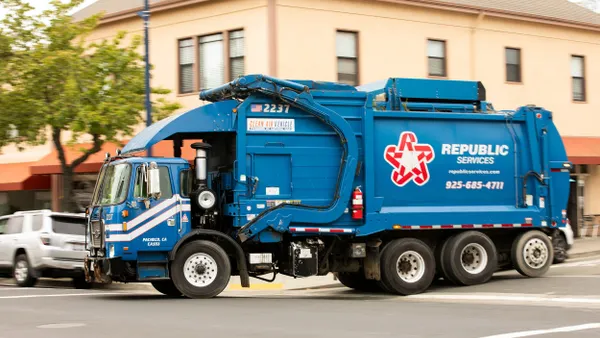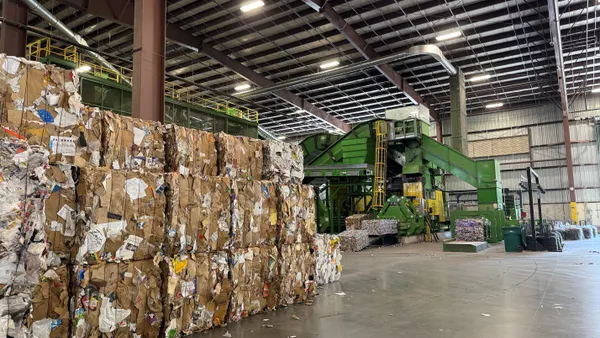Dive Brief:
- The Environmental Technology Council (ETC), a trade association for hazardous waste service providers, has filed a petition in the U.S. Court of Appeals for the D.C. Circuit challenging new FY20-21 fee increases for the federal e-Manifest program.
- The ETC alleges the Environmental Protection Agency (EPA) did not follow requirements, as set forth under the Resource Conservation and Recovery Act, to consult with the Hazardous Waste e-Manifest Advisory Board on biennial fee increases.
- Since the increases already took effect Oct. 1, ETC is calling for that fee schedule to be "set aside" and for refunds to be issued based on FY19 fee levels. "EPA does not comment on pending litigation," an agency spokesperson told Waste Dive.
Dive Insight:
The e-Manifest program launched in June 2018 with the goal of digitizing the process required to track hazardous waste shipments throughout the United States. While EPA initially estimated it would see nearly 3 million manifests submitted during FY19, recent reports indicate the agency will likely only receive 2.12 million. Out of that 2.12 million, EPA projects only 10,000 will be fully electronic.
This shortfall has complex implications for processing costs and logistics, and led the agency to announce a higher than anticipated fee schedule in July. New costs range from $8 per electronic manifest (previously $5) to $25 per mailed-in paper copy (previously $15). The cost for "image + data" entries, which currently represent 75% of all submissions, have risen from $6.50 to $14.
As this was the new program's first round of regularly scheduled fee changes, the advisory council anticipated having an opportunity for input. Instead, service providers reportedly learned about the news via an overdue memo. Hazardous waste companies say this gave them limited time to tell customers, or renegotiate pricing to reflect the change. For some, especially those with long-term contracts, this has meant bearing the new costs themselves.
"EPA indicated that this fee would be somewhat higher, but they never told us they were going to more than double the fee and that just was a shock. The fact that they didn't consult with us, didn't ask for stakeholder input, didn't give us any advance notice, just typifies how the agency has been ignoring our concerns." ETC Executive Director David Case told Waste Dive. "We have to pay the fee therefore we should have some input into how it's calculated."
The situation has seemingly been exacerbated by industry complaints that the EPA-designed system isn't workable, in part because of integration issues with corporate platforms for billing and tracking. Last month, the agency told Waste Dive it "acknowledges that electronic manifests represent a small subset of the manifest universe and thus is seeking ways to assist industry with faster adoption of electronic manifests."
According to the EPA's July memo, initial calculations actually could have led to higher fees. Instead, the agency chose to lower certain rates to incentivize the move toward fully electronic submissions by June 30, 2021.











